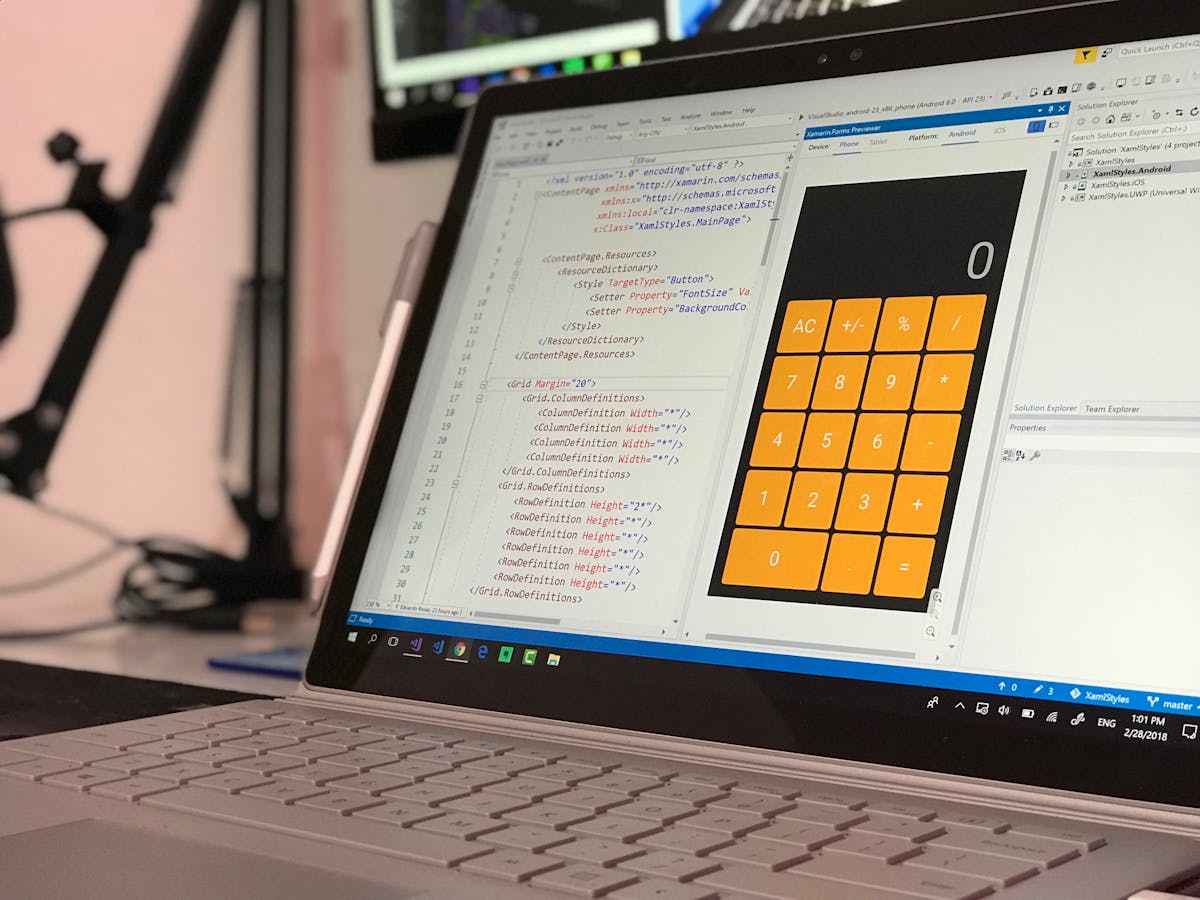Code Automation Tools that niels denekamp aether Trusts for Full-Stack Success
Everything About Full-Stack Development: Exploring Its Role in Effective Software Engineering
Full-stack advancement has actually arised as a foundation of modern-day software program design. By incorporating front-end and back-end modern technologies, it develops natural web applications. This strategy not just boosts individual interfaces yet additionally enhances server-side functionality. As the need for versatile designers increases, recognizing the nuances of full-stack development becomes important. Just what does this include, and what implications does it hold for the future of software program engineering?
Recognizing Full-Stack Growth
Full-stack development incorporates the complete spectrum of internet advancement, incorporating both front-end and back-end innovations. This multidisciplinary technique enables designers to develop fully functional web applications, taking care of everything from user interface layout to server monitoring. Full-stack developers possess a varied skill collection, enabling them to navigate different layers of an application, including data sources, server-side logic, and client-side interactions.Understanding the full-stack advancement process includes recognizing the relevance of customer experience and application performance. Programmers should consider just how these elements communicate, making certain a smooth experience for individuals. Furthermore, full-stack development promotes collaboration among groups, as developers can interact properly throughout techniques. niels denekamp dubai. This convenience not just simplifies operations however likewise enhances analytical capabilities. In an increasingly digital globe, the demand for full-stack designers remains to grow, highlighting their essential function in the software application design landscape
Key Technologies in Full-Stack Growth
The landscape of full-stack growth is specified by a range of crucial modern technologies that equip designers to construct durable web applications. On the front end, popular frameworks like React, Angular, and Vue.js assist in the creation of vibrant interface. These devices permit designers to improve and develop responsive layouts user experiences.On the back end, Node.js, Django, and Ruby on Rails are commonly utilized for server-side growth, making it possible for efficient handling of database interactions and web server logic. Databases such as MongoDB and PostgreSQL are essential for data storage space and retrieval.APIs are necessary in connecting the front end and back end, permitting smooth data exchange. Additionally, version control systems like Git are important for handling code adjustments and partnership amongst advancement groups. Jointly, these innovations form a comprehensive toolkit that makes it possible for full-stack programmers to provide high-grade applications successfully.
Benefits of Being a Full-Stack Programmer
A job as a full-stack designer supplies countless advantages that appeal to both amateurs and skilled experts. One considerable benefit is the versatility to deal with both front-end and back-end modern technologies, permitting programmers to create comprehensive remedies. This double ability enhances problem-solving capacities, allowing them to deal with issues throughout the entire stack efficiently.Additionally, full-stack developers often enjoy better work possibilities, as their diverse abilities make them valuable assets to companies looking for to streamline growth processes. The capacity to understand and take care of whole projects cultivates improved collaboration within groups, causing a more natural workflow.Moreover, full-stack developers often tend to regulate greater salaries because of their comprehensive know-how. Constant learning is an additional perk, as they regularly involve with different modern technologies and structures, maintaining their skills relevant. Inevitably, the function of a full-stack programmer is dynamic and gratifying, offering a fulfilling occupation course for those who welcome it.
The Full-Stack Growth Process
While maneuvering through the full-stack advancement procedure, developers take part in a series of organized phases that assure the development of durable applications. Initially, requirements gathering is crucial, as it lays the foundation for understanding customer needs and job purposes. This is adhered to deliberately the application design, where the general framework, technologies, and frameworks are selected to satisfy the requirements.Next, designers change to the front-end and back-end growth stages, where they create interface and server-side logic, respectively. Evaluating is an indispensable phase that validates performance, efficiency, and protection, dealing with prospective bugs and issues prior to deployment.Finally, the implementation stage entails launching the application and monitoring its performance in an online setting. Throughout this procedure, feedback and iteration loops are important, allowing for continual renovation and adjustment to changing demands. This structured strategy helps with the development of reliable, scalable, and maintainable applications.

Partnership In Between Front-End and Back-End Teams
Reliable partnership in between front-end and back-end teams is essential for effective full-stack advancement. Solid communication, making use of common devices and innovations, and agile niels denekamp aether partnership practices can substantially boost process and task outcomes - niels denekamp. By cultivating a natural working connection, groups can much better align their initiatives and deliver a seamless individual experience
Value of Communication
Successful partnership in between front-end and back-end groups rests on clear and consistent interaction. This interaction is crucial for straightening task assumptions, objectives, and timelines. When front-end designers understand the back-end style and the other way around, they can create a lot more natural and practical applications. Normal meetings and updates facilitate the exchange of concepts, allowing groups to resolve potential issues early in the advancement procedure. In addition, reliable interaction cultivates a collective environment, encouraging employee to share insights and feedback, ultimately resulting in ingenious services. By focusing on interaction, groups can lessen misconceptions, simplify operations, and enhance overall productivity. The function of interaction in full-stack growth can not be overstated; it serves as the foundation of successful software program engineering tasks.
Shared Tools and Technologies
Clear interaction establishes the phase for utilizing shared devices and modern technologies effectively in full-stack growth. This cooperation in between front-end and back-end teams depends upon the fostering of integrated tools that enhance operations and improve performance. Variation control systems, such as Git, help with smooth cooperation by permitting programmers to track changes and merge code effectively. Additionally, APIs function as an important bridge, making it possible for front-end and back-end parts to connect properly. In addition, shared growth environments, like Docker, foster uniformity, permitting teams to function in an uniform arrangement. By leveraging these shared tools, groups can minimize misconceptions and speed up the advancement process, inevitably resulting in more cohesive software application remedies that fulfill project needs and user assumptions.
Agile Collaboration Practices

Typical Difficulties in Full-Stack Advancement
What challenges do full-stack designers encounter as they navigate the complexities of both front-end and back-end technologies? One prominent challenge is the quick advancement of tools and frameworks, which calls for continuous discovering and adjustment. Designers need to stay updated with both front-end collections, such as React or Angular, and back-end modern technologies like Node.js or Django, which can bring about skill voids or understanding overload.Additionally, full-stack designers commonly have problem with workload management because of the considerable series of responsibilities. Balancing jobs in between customer interface style, server-side logic, and data source administration can bring about time restrictions and job delays.Collaboration and communication within groups likewise present difficulties, as full-stack programmers should bridge the space in between front-end and back-end groups, ensuring positioning on task goals. Ultimately, debugging across numerous layers of the stack can complicate problem resolution, consuming important time and sources.
The Future of Full-Stack Advancement
Innovation in technology guarantees to shape the future of full-stack development considerably. As companies progressively embrace cloud computing and microservices designs, the demand for full-stack designers that can effortlessly incorporate front-end and back-end modern technologies is anticipated to expand. The increase of expert system and device knowing will likely affect development techniques, allowing extra efficient coding and automated testing processes.Moreover, the appearance of low-code and no-code systems may redefine the role of full-stack designers, enabling them to concentrate on higher-level layout and architecture while simplifying routine tasks (aether group dubai). This shift could promote cooperation in between technological and non-technical employee, broadening the range of full-stack development.Additionally, the focus on cybersecurity will certainly lead to the combination of safety methods within the full-stack growth lifecycle. On the whole, the future of full-stack growth appears bright, characterized by continual discovering and adaptation to an ever-changing technical landscape
Frequently Asked Inquiries
What Educational Background Is Preferred for Full-Stack Developers?
The recommended academic history for full-stack programmers frequently includes levels in computer system science or software design. Nonetheless, many effective programmers also emerge from coding bootcamps or self-taught experiences, stressing useful abilities over formal education.
Just How Do Full-Stack Developers Remain Upgraded With New Technologies?
Full-stack developers stay updated with brand-new modern technologies via continuous discovering using on-line courses, going to conferences and workshops, participating in neighborhood forums, complying with industry blogs, and explore new tools and frameworks in personal jobs.
Is Full-Stack Advancement Suitable for Beginners?
Full-stack development can be suitable for newbies, as it offers a considerable understanding of both front-end and back-end innovations. Nonetheless, the learning curve might be steep, calling for devotion and consistent method to understand numerous skills.
What Prevail Profession Paths for Full-Stack Developers?
Typical occupation courses for full-stack programmers consist of roles such as software program designer, internet designer, technical lead, and project manager. Several also focus on details technologies or move into related areas like item management or customer experience layout.
Exactly How Does Full-Stack Advancement Differ From Conventional Software Development?
Full-stack growth includes both front-end and back-end tasks, permitting programmers to handle whole projects. In contrast, traditional software application advancement commonly involves customized functions, focusing individually on either client-side or server-side elements of applications. Full-stack advancement incorporates the total range of web development, incorporating both front-end and back-end technologies. Full-stack developers have a wide-ranging ability collection, enabling them to browse various layers of an application, consisting of data sources, server-side logic, and client-side interactions.Understanding the full-stack advancement procedure includes identifying the significance of customer experience and application efficiency. Furthermore, full-stack growth fosters cooperation among teams, as programmers can communicate efficiently throughout techniques. The landscape of full-stack development is defined by a selection of key innovations that encourage designers to construct durable web applications. While maneuvering via the full-stack growth process, programmers engage in a collection of structured stages that guarantee the production of durable applications.